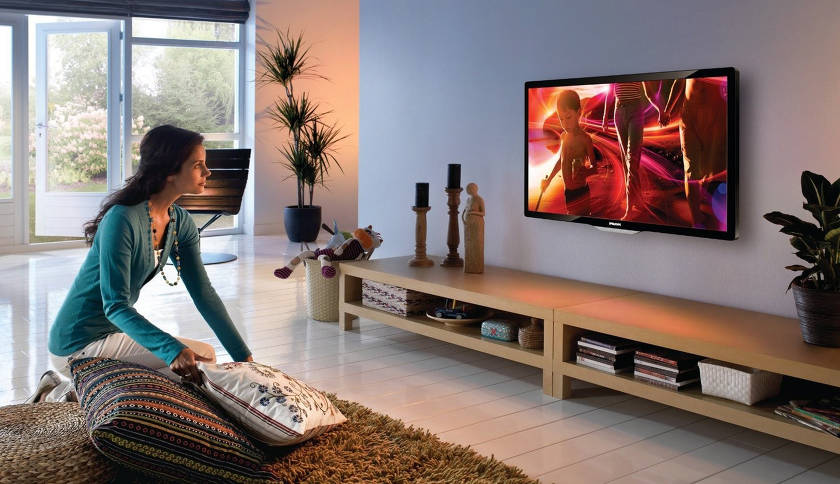A variety of technologies to improve the quality of TVs has made it very difficult to understand the abundance of complex terms in the description of modern models without the help of a consultant. But, you should understand that their advice is often burdened with tasks from management. If you need to implement a certain batch of goods, you will not receive intelligible answers to your questions. The first thing to consider:
- How much are you willing to spend money on the purchase;
- Distance from the screen to users;
- Dimensions, taking into account the free space in the room.
After answering these questions, you can begin to study the current range of equipment in stores or ready TV ratings with us to simplify the task.
How to choose the diagonal of the TV?
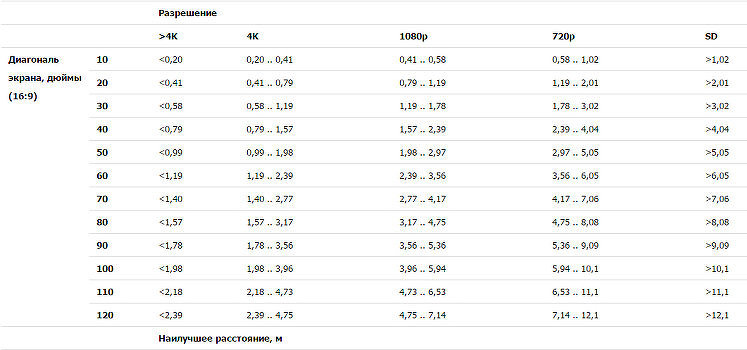
Based on personal experience, I can say that you will always want more than inches. First, a little 40 ", and then 55". However, there is TV diagonal guide taking into account the distance of the screen from the user, which we recommend using.
Currently, the most popular models are 32, as well as 55 inches. Smaller models typically have a direct display with Full HD resolution. If the cost is not a priority parameter, there is enough space in the apartment, it is better to buy from 55 inches with a curved screen and 4K resolution. However, you should consider where the device will be:
- for the kitchen - from 22 "to 32";
- for a bedroom - from 32 "to 42";
- for the living room - from 32 "to 55";
- home theater - up to 80 "and more.
Note that the quality of the picture depends not only on the size, but also on the quality of the matrix, as well as pixels.
Screen resolution
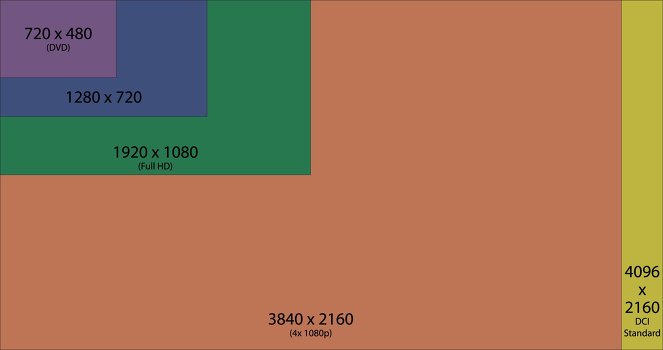
Screen resolution - the number of horizontal and vertical pixels of the display from which the image is built. The more points, the picture is displayed in more detail, sharper. Given this parameter, the following types of TV screens are distinguished:
- HD (1280 × 720 pixels) - a budget option, the popularity of which every day is overshadowed by more expensive counterparts. Such models are rarely found on sale;
- FULL HD (1920x1080 pixels) - the most popular resolution, due to good detail, loyal price;
- 4K (3840x2160 pixels) - the highest quality resolution among popular TVs, the obvious disadvantage of which is the high price, as yet a small amount of relevant content;
- 5K (5120x2160 pixels) - the maximum resolution that is not yet in demand, as there is very little content for such TVs. Experts believe that this format is the future.
We offer you to dwell on the most popular formats in more detail in order to understand which one is suitable for you specifically.
FULL HD or 4K - which is better to choose?
When choosing a TV for screen resolution, some users sacrifice the number of pixels in favor of size.This is a completely wrong approach! There is no point in buying a small 4K 32-inch display, because you simply do not feel the quality of detail on such a display. This format makes sense if you use a model from 55 inches. Therefore, it is necessary to build on financial opportunities. If the budget does not allow you to buy a huge screen - it is better to purchase a model with FULL HD resolution. You must understand that the resolution is 3840x2160 - involves the use of a more expensive matrix. Therefore, choosing a 4K TV, you should not rely on models that cost a little more than FULL HD. Otherwise, you will soon encounter some kind of trick: colors are displayed worse, a weak processor slows down, etc.
At the same time, if you buy a TV with a view to the future, of course, the potential of 4K is higher, since production is still developing, and in a few years faster and more advanced matrices will begin to appear. As a result, such models will eclipse the shelves and pages of online stores. But so far there is not enough content: masterpieces like “Gladiator”, “Matrix”, “Fast and Furious” will not be found on them. Most of the collection movies are made maximum in FULL HD format.
Screen types
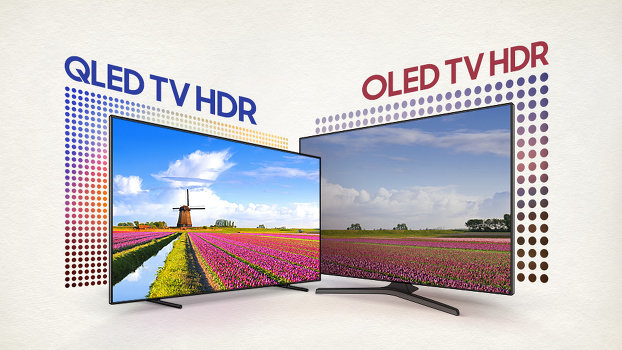
A very common question - which technology for the production of screens for TVs is better? Currently, the following types exist:
- LCD or LED - the display is made on the basis of liquid crystal crystals, which are sowed by LEDs. Previously, they were highlighted with fluorescent lamps, which negatively affected the contrast, power consumption. Currently, this problem has been solved, therefore LCD-screens are in the greatest demand, because they have an adequate price / quality ratio, good light transmission;
- OLED - The display is made on the basis of organic LEDs, which do not need additional illumination, since they themselves emit light when power is applied. Such televisions have a more natural black color and viewing angles. In addition, when choosing an OLED TV, you can count on higher brightness, contrast and color reproduction. Naturally, the matrix is more expensive;
- QLED - Works on the basis of quantum dots, which are much smaller than LEDs and LCD crystals. For obvious reasons, such models are energy-efficient, transmit colors more realistic. They have a wider color spectrum - they can display almost any shade. It costs even more.
Curved or straight screen?

Here, things are equivalent, as with resolution. That is, when choosing a TV for home, you need to start from the budget:
- With curved screen - creates the effect of immersion, acting on peripheral vision. Since you do not see the boundaries of the display, you get more experience from the session. As in the case of 4K resolution, such inventions are relevant if there is a minimum of 55 inches;
- Flat screen - in no way inferior to the analogue in the detailing of personnel. The only difference is that such models are not able to cause the effect of complete immersion when watching your favorite movie or series. However, they are cheaper, more relevant when operating small monitors.
Therefore, there is no point in buying a TV with a curved screen, if it has a small size!
Types of matrices for TVs

All types of matrices have physical differences, reflected in the quality of the output image. When choosing a TV for home, keep in mind that the most expensive and high-quality technology is IPS, developed at Hitachi's factory. Later they began to use it for the manufacture of their equipment LG and Philips. However, there are 3 types of matrices for TVs, each of which deserves attention:
- TN - It is used in budget devices. Such matrices work on the basis of crystals arranged in a spiral. This provides a good viewing angle. In addition, control electrodes are placed on each side of the substrate. Another advantage of the matrix is the response speed of the cells, which instantly transmit colors.Models are economical in terms of energy consumption, but they are inferior in terms of transmitting the entire color palette. Films about nature are not recommended to be watched on such TVs;
- VA - control electrodes are also located on both sides of the block, but divide the surface into zones. Thanks to this, the shades of the colors are more saturated. Problems in poor viewing angles. Nevertheless, the black color in such TVs is more saturated, the response is faster. If you want to choose an inexpensive, but good TV for the living room, conference room, office - this is a good option, but not for home;
- IPS - The best technology in which crystals are embedded parallel to the plane. The result is achieved due to the polarization of the light absorbed by the rear filter. Choosing a TV with an IPS matrix, you can count on displaying a bright, saturated picture with natural black color. In this case, you can view content at angles of 180 degrees.
Matte or glossy screen?

Regardless of the type of matrix, the TV screen may have a matte or glossy finish. However, each of them has its advantages and disadvantages:
- Matte displays - not afraid of direct sunlight, and do not glare. The picture remains the same quality, without flare. The problem is that such screens have not too saturated color reproduction in comparison with analogs;
- Glossy displays - they are distinguished by a better, more saturated picture, but when exposed to sunlight, they glare. If you do not know how to choose the right TV, pay attention to models with a special anti-reflective coating. They are not subject to overexposure.
As for the harm to the eyes - there are many speculations, but there are no facts. You should understand that modern TV models from leading brands are practically harmless, regardless of the type of coverage.
HDR function

In simple words, High Dynamic Range Imaging is a technology to increase brightness in bright and decrease in dark areas. As a result, it is possible to obtain a more colorful and saturated image. The problem is that this technology is relevant only for content shot with a color depth of 10 Bit. Such matrices are used only by professional photographers and cameramen. Therefore, films with HDR support are even smaller than with support for 4K format. According to experts, choosing a TV with this technology should only be done if you want to purchase a screen that will be relevant for at least a few more years. If the budget leaves much to be desired, it is quite possible to do without this function!
TV Expert Advice
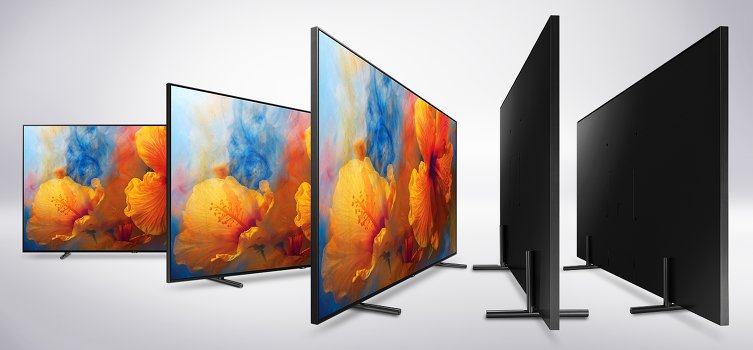
Of course, the main parameter is the screen quality. However, certain users when choosing a TV expect to get good sound. What do experts think about this?
- Compact models are simply not able to provide the sound quality that larger analogues offer due to design features;
- To get good sound you should buy models with a built-in subwoofer;
- Manufacturers are trying to equip 4K models with better sound quality than Full HD, which, of course, is understandable.
According to experts, the best option is a model with a power of 20 watts and a Dolby Digital system.
Frame refresh rate
This parameter shows how many times per second the frame will be updated. The parameter is displayed in Hertz. The higher the score, the clearer and smoother the picture when viewing dynamic scenes. Unfortunately, this characteristic consists of several values, including the response time of the matrix, the smoothness of the picture, etc. Do not confuse the refresh rate with frame interpolation, which marketers allow themselves to do, indicating 800 and 1000 Hz in the description of their products. The accepted standard is 60 Hz. For a comfortable viewing of action films, 120-240 Hz is enough. More is just not necessary! If you see an indicator over 500, then the model has a good display reaction, that is, the pixel backlight in the matrix works very quickly.But this parameter should be measured in milliseconds. When choosing a TV, keep in mind that not all users are able to catch such changes due to individual characteristics.
Useful technology
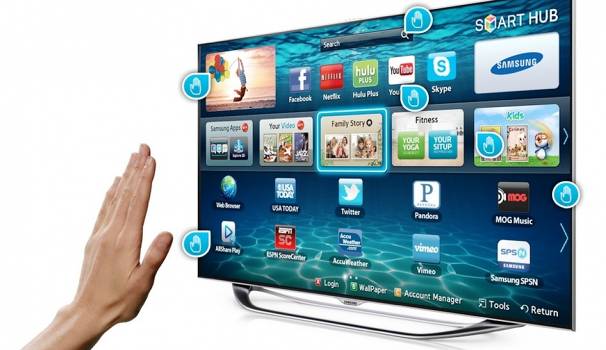
3D - An interesting feature for which you have to pay well. It is worth saying right away that when choosing a TV for home use with this technology, you will not use it forever. Judging by customer reviews, after 5-6 movie views in the specified format, interest disappears. And, believe me, it will be with you as well. Therefore, the option should be considered only as an addition, with the help of which it is interesting to watch films about nature, and then not for long. When choosing a 3D TV, also note that there is not as much relevant content as we would like.
SMART TV - A function that involves connecting to the Internet. Allows you to view various content on the open spaces of online hosting, including YouTube.
In addition, modern televisions can be equipped with card readers, built-in players and even cameras for making video calls. This list of various additions is not limited to, but do not forget about the main purpose of the TV. Keep in mind that many manufacturers are trying to reduce the cost of technology by installing a variety of functions, sacrificing the quality of the main components!
Required Connectors
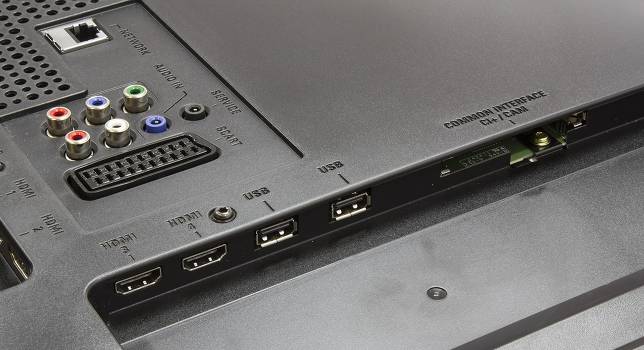
TV experts also recommend that you pay proper attention to the installed connectors. The most necessary is HDMI, designed to output pictures and sound from different devices. With it, you can compensate for sound quality if the TV has poor acoustics. Modern models are equipped with at least 3 ports. And often this is not enough if you plan, for example, to connect a prefix, a player and several other devices.
Fans of removable drives will need a USB connector. And, if you like to watch content on the headphones, then an additional output for them will come in handy.
Thus, if you want to choose a good TV for your home, look for a model with a resolution of 4K, a curved OLED screen and a glossy finish based on the IPS matrix. At the moment, such a device will cost from 100 thousand rubles. If the budget doesn’t allow you, focus on the model with a flat LED-screen and Full HD resolution. But do not sacrifice the quality of resolution, matrix or other important parameters due to the small size. Most technologies are relevant for large dimensions. Good luck


